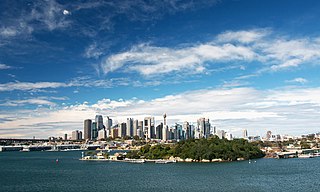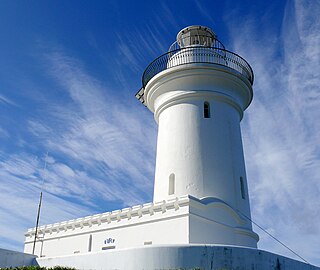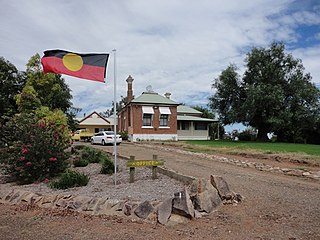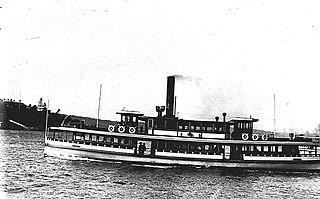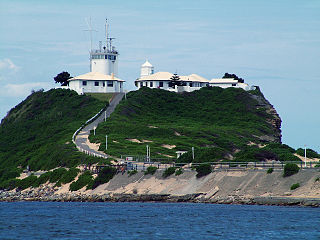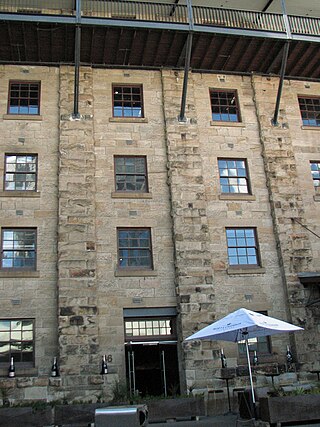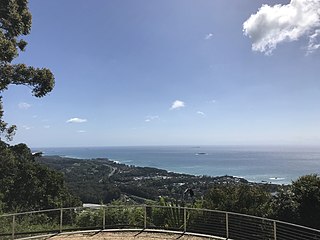Ferguson family
Association of the building with the Ferguson Family started with Mr Andrew Ferguson who was a ganger and works supervisor for the Department of Public works on the breakwater construction in the late '40s, '50s and '60s. [1]
The Public Works' Coffs Harbour District Engineer at the time, Hugh Bailey, entered into an arrangement with Mr Ferguson to allow his family to occupy the "office" as a family home during the early 1950s. Prior to this arrangement the family lived on the nearby block of Dung Hill. Repair dumping to the Harbour was needed in 1953 and whilst it is possible that the building was an office associated with that work, it could have been built when earlier works were underway, as Ferguson's occupation was justified on the basis that no construction work was taking place. [1]
Allowing the family to occupy the "office" as a cottage was an exceptional step for a Government official at the time. In the 1950s, the status of Aboriginal people was quite different from the present day. The decision was based on two reasons, one explicit and the other implicit. [1]
The explicit reason was in exchange for Andrew Ferguson providing oversight of the harbours southern headland and construction areas in the periods when no construction work was taking place. This is the formal justification cited by offices of the Department of Public Works. In the succeeding years the arrangement with the Ferguson family was endorsed by successive district engineers of the Department, including Len Harper in the 1960s and Ron Colley in the 1970s. (They acknowledged the arrangement to the members of the community and to officers of the Department of Lands.) [1]
Repair dumping to the Harbour was needed in 1953 and whilst it is possible that the building was an office was associated with that work, it could have been built when earlier works were underway, as Ferguson's occupation was justified on the basis that no construction work was taking place. [1]
The implicit reason that the Fergusons were allowed to make their home in the cottage was the high regard that the Public Work's District Engineer held for the good works and social contribution made by Andrew Ferguson's wife, Evelyn Ferguson, or "old Mrs Ferguson" as she was known in the Public Works Office at Coffs Harbour. (This can be attested to by a retired officer of the Department who still resides in Coffs Harbour.) [1]
At the Department's Head Office in Sydney, successive Principal Engineers of the then Harbours and Rivers Branch, (subsequently Rivers and Ports Branch, and Coastal Branch), including John Kerle, Glan Evans, Michael Clarke and John Malone acknowledged the arrangement in their dealings on the harbour. [1]
When the Department was considering conceptual plans for a large tourist development on the southern foreshore in the early 1980s under the then Minister Laurie Brereton, it specifically excluded any intrusion on the Ferguson dwelling because their valid occupation of site was not disputed. [1]
Mrs Evelyn Ferguson, also known as Nanny Ferguson, was an exceptional lady. Her life had lasting significance to both the Aboriginal and white communities of Coffs Harbour, the north coast region and beyond. [1]
During the 1950s and 1960s, the status of Aboriginal people was low and relationships with the broader community were strained. Housing was poor, education was minimal and health conditions were unacceptable. Evelyn Ferguson was a strong Aboriginal woman who confronted all of these issues head-on over her life, and in doing so provided a bridge between the Aboriginal and white communities and was a pioneer in many aspects of Aboriginal life that are now accepted as conventional. [1]
Evelyn Ferguson had the ability to function equally in both Aboriginal and white communities because of her wisdom, her communication skills and the respect in which she was held. She was an active member of the Seven Day Adventist Church and encouraged her family to attend services, facilitating cross-cultural mixing and friendships at a time when it was rare. She was held in high regard by the police, who knew her as "Granny Ferg". On many occasions during the 1950s and 1960s they brought the communities' and individual's problems to her for mediation and resolution because of her wisdom, respect and authority. [1]
She was also a well regarded and integral contact point between "the Welfare" and the local and regional Aboriginal communities. In the early days, "the Welfare" constantly intervened between kids and their families, and the families from the local area and further afield looked to Nanny Ferguson for advice and protection. Her battles with welfare and social service authorities were many. She stood up for the kids, saw that their rights were observed, gave assurances on their behalf and then ensured that the assurances were honoured. In the role of an Elder, she took it upon herself to protect the communities' children and defend their rights. Her strength of character meant that her words carried authority and were accepted by both "the Welfare" and the Aboriginal community. [1]
She was also respected by the business community of Coffs Harbour. She was a personal friend of the Symmonds family who operated a large department store, and went fishing with them on many occasions. She was known and respected by Hugh Bailey, the Public Works District Engineer - the person responsible for allocating the dwelling to her family. Such relationships during that time were extraordinary and provided an exemplary model of cross cultural acceptance for both the Aboriginal European people in the Coffs Harbour and wider community. [1]
The "bridge" that Nanny Ferguson forged between the Aboriginal community and local and wider community and servises was vital to the lives and history of inter community relations for the local Aboriginal people, those in the coastal region and beyond. [1]
In the 1950s and 1960s, education amongst Aboriginal children was merely something one did to avoid "the Welfare". Nanny Ferguson did much to change this by example, insisting that all her children, grandchildren and extended family gain the best possible education. She recognised that education was the key to future employment and community advancement and endeavoured to convince others of this. Despite the burdens of her own family, Nanny Ferguson held down a job as a laundress at the District Hospital and later the Sunny Side Maternity Hospital. In doing so provided a role model for her community. Such influence has continued, and today education remains a core value of the community. [1]
Nanny Ferguson is remembered by the local and wider European and Aboriginal community as a lady brimming with love and care. As well as her own children, she took in nephews and nieces, grandchildren, members of the extended family and anyone who needed help from the local and wider Aboriginal community. No-one was ever denied a bed or a meal. Sometimes the little cottage accommodated up to 15 children and half a dozen adults who were in need of shelter and assistance. It was for this reason that the extension to the family home was made in the early 1970s. Later a number of small sheds or "bunkers" were built for more room. If there was not enough food, she would simply go fishing herself and catch a meal. The cottage was a "home", a safe place, in its truest sense to several generations of the family, the extended family and anyone in need. [1]
The cottage is the symbol of Nanny Ferguson and her legacy which continues to be held in high esteem within the community of Coffs Harbour and Aboriginal people from wider afield who were embraced by Nanny Ferguson's generosity. Today, the good relations and respect nurtured by Nanny Ferguson continues within the community of Coffs Harbour. Her legacy remains in the values that Nanny Ferguson instilled in her family and extended family and demonstrated to the community at large. It remains in the cohesiveness of the Aboriginal community in Coffs Harbour. [1]
The building also has an important association with the maintenance of a significant public work, the Coffs Harbour, which was initiated under the eminent Public Works engineer Ernest de Burgh who as Chief Engineer for Harbours and Water Supply (1909 - 1927), was in charge of the Coffs Harbour Improvement Works. [1]
In 2005, the Ferguson family faced the prospect of eviction from the property amidst concerns the state government wanted to demolish the cottage. As a result, the Coffs Harbour and District Aboriginal Land Council sought a preservation order on the property. [2] It was subsequently added to the State Heritage Register in November 2009, becoming what was reported to be the "first building of Aboriginal importance" to be added to the register. [3]




